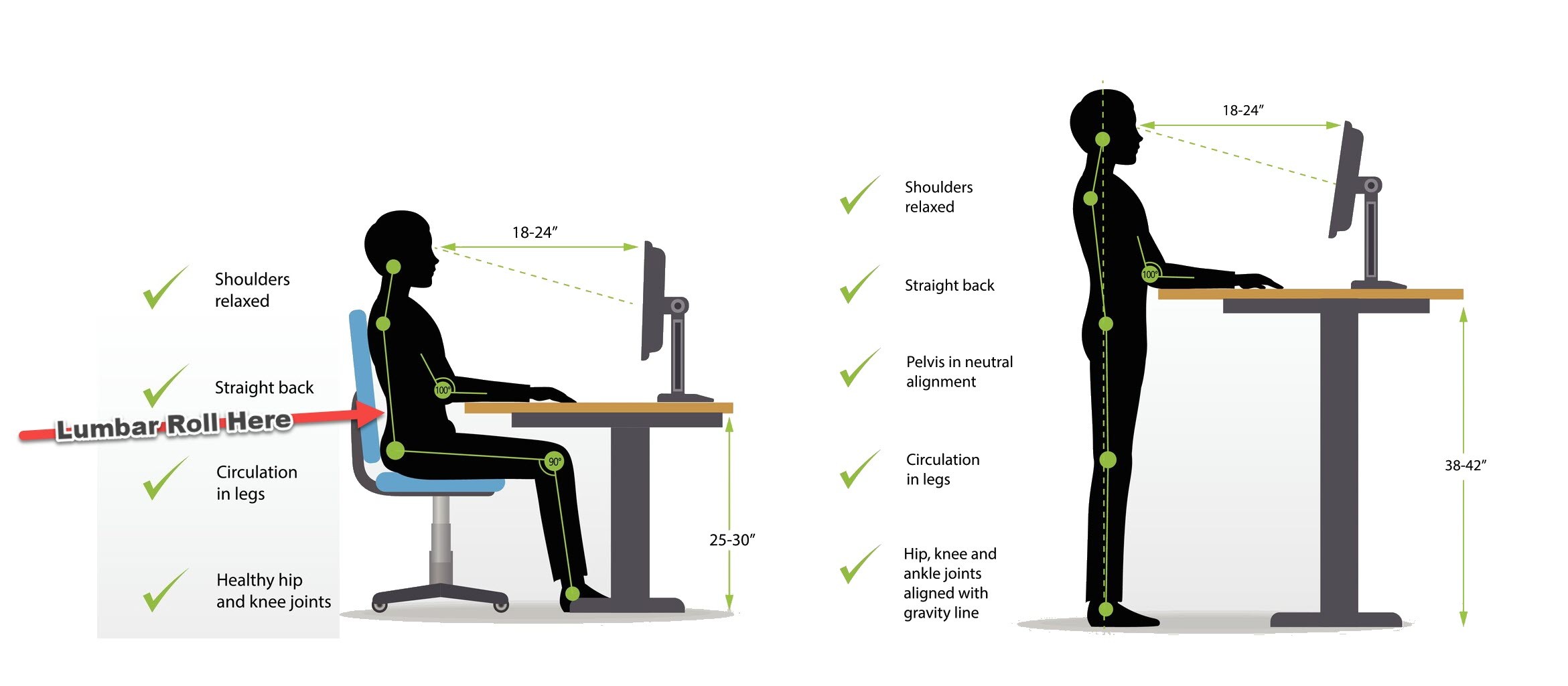Texans - Accepting Insurance! Click HERE!
Osteoporosis Information – Ergonomics
Proper posture in an office setting is one piece of osteoporosis information that is overlooked. Proper posture at a computer is referred to as ergonomics.
Many of my clients have jobs or hobbies that require them to be on a computer for extended periods of time, so ergonomics is often discussed.
In this article I want to share some recommendations that I often give my clients.
These recommendations are good for people with and without osteoporosis.
However, this information is even MORE valuable for people with osteoporosis in order to prevent fractures and injury from poor posture.
Ergonomics
-
- The top of the computer screen should be at eye level or slightly below when seated or when standing.
-
- Upper back is straight with shoulders relaxed.
-
- Arms should be relaxed (on arm rests if able to) with elbows at 90 – 100 degrees. Wrists should be straight when hands are placed on the keyboard.
-
- Lower back should be supported with a curve in the chair or an added lumbar roll for support.
-
- When seated, hips should be as far back as possible in the chair. Hips should be close to 90 degrees when seated and feet should be flat on the floor or on a small footrest. When standing, hips, knees, and ankles should all be in line and feet should be flat on the floor.
-
- Knees should be between 90 -110 degrees when seated with feet flat on the floor or on a small footrest.

- It is also important to take breaks from sitting or standing for prolonged periods of time. Staying in one position for too long is not good for the body. Every hour, take “movement breaks”. Walk around, do a few jumps, stand up and march in place or a combination of all of these ideas!
- If you can get a sit to stand desk or a sit to stand desk topper, change positions from sitting to standing and vice versa every hour after taking your hourly “movement break”!
FREE STARTER COURSE HERE!
Learn MORE!
Movements to Avoid When You Have Osteoporosis
